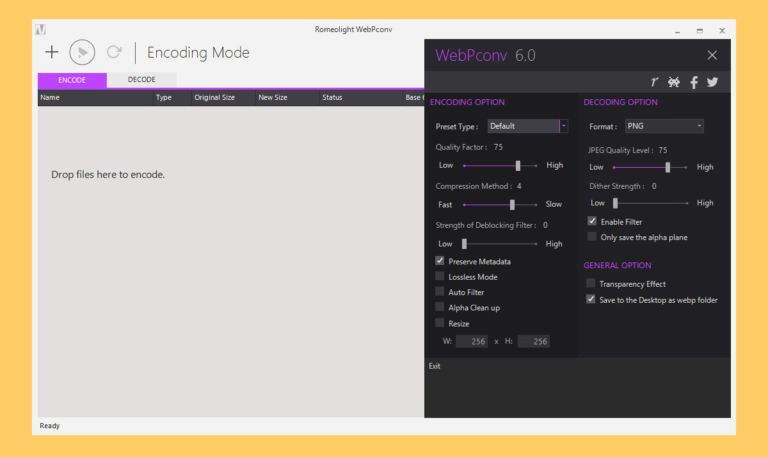

To serve WebP images, use one of the following methods:ġ) Manually convert your images to WebP format WebP is Google's recommended next-gen format and is also the most widely used format with the best browser/device support. Only the images that can be reduced by at least 8 KB will be displayed.Ĭhoose a next-gen format based on the range of browser/device support available. Clicking the audit on the GTmetrix report lists all the images and their potential savings in KB.Ĭlicking the audit reveals the list of images served in older formats, and potential reduction in file size by moving to newer formats like WebP. It then converts each image to the WebP format to calculate how much each image's file size can be reduced. GTmetrix analyzes your page and identifies all the images that are served in older formats like BMP, JPEG or PNG. If your target audience falls within one of the unsupported browser/device categories, you should serve optimized fall-back images in the original JPEG/PNG format so that your users don't see a broken or badly designed page. Note that browser support is also generally added for the latest browser versions, which your visitors may not be using. Partial support could refer to - for example, not offering either lossless compression or animated WebP images, or both, depending on the unsupported platform.įor a full list of supported browsers and devices for the WebP format, click here. Moreover, some browser/device combinations offer full support while others offer either partial or no support. It is important to understand that most next-gen image formats, like WebP, are not yet widely supported across all devices and browsers, even as adoption continues to rise.įor example, at the time of writing, WebP support has been announced for Safari on iOS but has not been implemented yet. Next-gen images and browser compatibility This is, especially, important for your visitors' page experience. Switching to next-gen image formats not only reduces image file sizes, but also overall page size, resulting in faster loading pages, particularly on mobile devices. In the vast majority of cases, serving a WebP image can reduce image file sizes in the order of 25-50%. WebP offers superior image optimization, enabling lower file sizes and faster page loads.


 0 kommentar(er)
0 kommentar(er)
